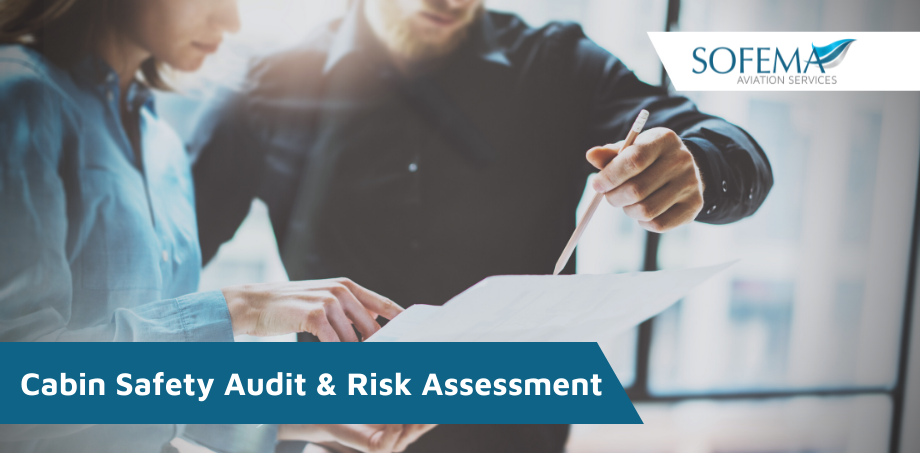Sofema Aviation Services (SAS) www.sassofia.com identifies potential risks which can be considered during SMS Audits & Assessments of the Aircraft Cabin Operational Environment.
- All elements concern general cabin interface including Cabin Crew Ops and Passenger Awareness.
- To be considered, risk assessed and managed depending on the nature of the operation.
The following 30 items serve as a starting point for review and where appropriate to be added to the operational hazard/risk log:
1. Emergency Equipment Locations Varying Amongst Aircraft of the Same Make and Model.
2. Evacuation Commencing with Engine Still Running.
3. Incorrect Brace-for-Impact Positions Illustrated in Safety Cards.
4. In-Flight Fire/Explosion from Items/Dangerous Goods Carried into Cabin by Passengers.
5. No Brace-for-Impact Commands or Instructions Given to Passengers.
6. Not All available Exits Used Based On Crew’s assumption that Not All Exits are Needed.
7. Evacuation Hampered by Elderly or Disabled Passengers.
8. Incorrect or Lack of Instructions to Evacuees for Using the Slide (This threat relates to passenger safety cards, passenger briefing, and instructions from cabin crew at the top of the slide. The main issues are conflicting/inconsistent/nil information on how to carry infants and how to sit on the slide).
9. Passengers Hesitate in Using Upper Deck Slides.
10. Incorrect or Insufficient Instruction On Using Life Vest or Flotation Device.
11. Crew’s Lack of Understanding of the Dangers of Hypoxia.
12. Lack of Communication/Information between Crewmembers (Procedural Issues) during an In-Flight Emergency.
13. Lack of Communication/Information between Crewmembers (Procedural Issues) during/Prior to Evacuation.
14. Flight Crew Decision Not to Carry Out an (Immediate) Evacuation Based On Unconfirmed Information.
15. Passengers’ Difficulty in Understanding Cabin Crew’s Instructions due to Language.
16. Cabin Crew Actions Do Not Comply with Evacuation Procedure.
17. Inadequate Cabin Crew Training.
18. Insufficient Cabin Crew Instruction to Passengers during Evacuation.
19. Evacuees Attempting to Collect (or Collecting) Cabin Baggage during Evacuation.
20. Evacuees Carrying Baggage onto Evacuation Slides or Through Emergency Exits during Evacuation.
21. Passenger Opening Exit without Assessing External Hazards.
22. Evacuees Remaining in the Vicinity of the Aircraft and/or Allowed to Re-Enter Aircraft.
23. Unruly passenger behaviour.
24. Occupants Not Belted during Impact.
25. Evacuation/Deplaning Using Other Assist Means (e.g. Ladder).
26. Rapid Decompression due to Puncture of the Fuselage (Not Uncontained Engine Failure).
27. Cabin Crew Clothing or Apparel Adversely Affecting the Performance of Safety Duties.
28. Aircraft Flotation Time Is Reduced due to Opening of a Non-Ditching Emergency Exit (Below Waterline) or Water Barrier Not Properly Installed.
29. Hot Fluids and Drinks Spilt onto Occupants during In-Flight Meal Service.
30. Insufficient or Inconsistent Information On Emergency Exit and Assist Means in Safety Card or Manual.
Next Steps
Follow this link to our Library to find & Download related documents for Free.
Sofema Aviation Services www.sassofia.com and Sofema Online www.sofemaonline.com provide Safety Management System Consultancy & Training as Classroom, Webinar & Online – for additional details please email team@sassofia.com
Tags:
aviation, aviation safety, Risk Assessment, Audit, SMS, Hazard, Aviation Safety Management System, Aviation SMS, SAS blogs, Safety Audit, Aircraft Cabin, Cabin safety





